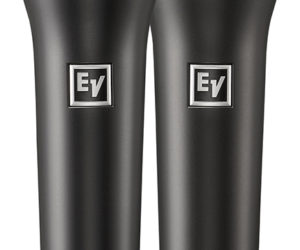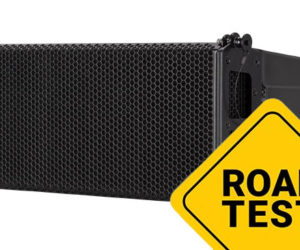My company, Trinity Productions (Tracy, CA), has been doing live sound and production since 2005, and we’ve always felt that “bigger is better” when it comes to loudspeakers for live production with the festivals and events that we serve.
The challenge for us (well, me) is wrapping my head and ears around a loudspeaker system that touts some pretty impressive numbers while using small drivers and cabinets. Enter the RCF HDL 6-A.
Introduced last year, the HDL 6-A is a compact, active line array with two 6-inch woofers and an ND 340 compression driver (1.7-inch voice coil) mounted on a 100- x 10-degree (H x V) waveguide. These components are driven by a 2-channel class D amplifier with stated maximum (peak) power of 1,400 watts. Also onboard is DSP with RCF’s new FiRPHASE algorithms to manage crossover, phase correction, limiting and protection.
The amplifiers have a mechanical aluminum structure that lends stability during transportation and also helps with heat dissipation. The input board presents both XLR/jack balanced inputs, XLR output link, volume and a switchable EQ Mode.
The cabinet, which measures 9.3 x 18.5 x 15 inches (H x W x D) and weighs 25 pounds, is made of polypropylene composite material designed to dampen down vibrations. The integrated mechanics allow the building of J-shaped or spiral arrays. Foam backing inside the cabinet is intended to afford the transducers with added protection from dust.
Going into this evaluation process, I wasn’t totally skeptical; I think “cautious” would be the word. We’d heard the HDL 6-A in demo rooms where it was finely tweaked and EQ’d for the room and setup to give a pristine demo experience, but how would that translate to a mid-sized sound company doing events for 1,500 to 3,000 while also providing a “wow” listening experience for the crowd?
When we agreed to deploy HDL 6-A arrays for the main stage at the recent Blues and Brews instead of our usual PA for the event, I was concerned with how six boxes per side were going to supply acceptable coverage. Further, what would be the comparison with the previous system? The HDL 6-A proved quite impressive in both regards.

Putting It Together
Let’s start with the setup and assembly of the arrays. For this evaluation, RCF also provided a lot of bells and whistles: a dozen HDL 6-A modules joined by two HDL 12-AS (single 12-inch) subwoofers, along with carts, fly bars, rain covers, shackles, pole mounts – the works.
The assembly process started with the carts/trollies; they come with wheels on and gear down, ready for action. Locking brakes made opening and setting the first box a breeze. The carts’ hardware aligns with the detents in the loudspeakers so that everything just falls into place.
We stacked one module after another with ease, and the 3-point rigging system was as fast as any I’ve seen. Wham, 30 minutes and all of the boxes were open, two carts were down, and 12 loudspeakers were assembled into arrays with cables, ready to go.
The fly bar attached at the top with ease, and with five to six boxes per cart, it quite balanced for transport and not at all top-heavy. We also put the 12-inch sub on top just to see how the weight distribution went and was quite surprised that with a little assistance we would be able to put the entire rig with the 12-inch sub attached into the truck for transport, strapped ‘er down and ready to roll.








